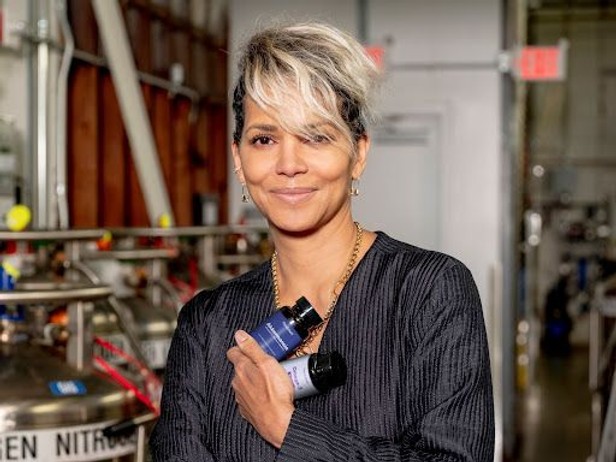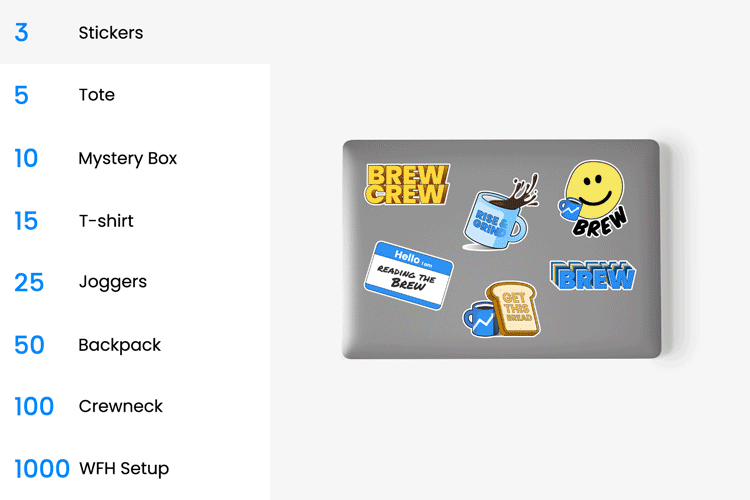|
|
|
|
|
|

Taking a cigarette break outside an office building in Seoul, South Korea. Anthony Wallace/AFP via Getty Images
|
|
|
The wackiest headlines from the week as they would appear in a Classifieds section.
Careers
CLERK, UNLIMITED PTO: In 2016, a city employee in Buffalo, NY, was placed on administrative leave after being accused of padding her checks. But then…no one seemed to follow up. She’s been collecting paychecks for the last seven and a half years, and for six of those years, she’s had another job.
DIRECTOR OF WAY OUT THERE: NASA announced it had hired a research director of UFOs but then didn’t reveal who it was for about seven hours. That’s a lot of buildup for a guy named Mark.
Personal
ISO ROYAL OUTERWEAR: J. Crew’s website crashed after lots of people tried to snag the white blazer Meghan Markle was seen wearing at the Invictus Games in Germany. It’s currently sold out, but Prince Louis’s short pants are available in adult sizes.
NEWS-WATCHING BUDDY WANTED: For six episodes this fall, CBS’s iconic news show 60 Minutes will stretch on for 90 minutes. Hmmm, maybe it’s learned too much from its NFL lead-in.
For sale
USED POPEYES SPATULA: The restaurant that promises “Louisiana fast” is getting an extreme makeover, poultry edition. Popeyes is updating its kitchens for the first time in 10 years to sling more chicken sandwiches.
SIMONE DE BIRKENSTOCK: The company behind the iconic sandal said in its IPO filing that “modern feminism” is driving sales of Birkenstocks. Step 1: Women get their own credit cards. Step 2: Women use those credit cards to buy chunky sandals.—MM
|
|
|
|
|
Cravings, mood, energy, skin complexion—so much of how we feel stems from our gut.
If you want to prioritize your gut health, you need to know about Pendulum’s Akkermansia. It’s a keystone strain of a powerful probiotic for gut health that can strengthen the gut’s lining, improve GI health, and reduce gut permeability.
In a survey of 180 customers completed after 3 months of Akkermansia use, 81% reported improved GI/gut health and 66% reported decreased sugar cravings. They don’t call it a keystone strain for nothin’.
One of those customers? Halle Berry, who enjoyed the product so much that she became the biz’s Chief Communications Officer.
Got a good gut feeling? Get 20% off your first month with code MORNINGBREW.
|
|
|
|
David Dee Delgado/Getty Images
Monday marked the 22nd anniversary of the Sept. 11 attacks. Each year on 9/11, from dusk until dawn, the Tribute of Light in Lower Manhattan projects twin beams four miles into the sky. On a clear night, these shafts of light—the most powerful ever projected from Earth—can be seen from 60 miles away, according to the 9/11 Memorial Museum.
|
|
|
Imgflip
Here are some illuminating scientific discoveries from the week to help you live better and maybe even get rid of your stomach ache.
 New moms more likely to see Elvis on toast. That phenomenon of seeing a smile in an inanimate object is called face pareidolia, and researchers have found that it is more common among women who just gave birth. When shown images of random objects, postpartum women tended to identify illusionary faces unseen by other women. Researchers think this is because new mothers have higher levels of oxytocin, the “love” and “trust” hormone involved in social bonding, which previous studies have connected to the brain’s ability to recognize facial expressions. New moms more likely to see Elvis on toast. That phenomenon of seeing a smile in an inanimate object is called face pareidolia, and researchers have found that it is more common among women who just gave birth. When shown images of random objects, postpartum women tended to identify illusionary faces unseen by other women. Researchers think this is because new mothers have higher levels of oxytocin, the “love” and “trust” hormone involved in social bonding, which previous studies have connected to the brain’s ability to recognize facial expressions.
 Having indigestion? Try turmeric. In the first clinical trial to directly compare turmeric to conventional indigestion drugs, the yellow spice proved its medicinal worth. Hospital patients in Thailand who received turmeric capsules recovered just as well from their stomach pain as those placed on omeprazole, a generic form of Prilosec OTC (which is linked to health risks with long-term use). Turmeric has long been used in Eastern medicine as a natural anti-inflammatory and antimicrobial treatment, and these findings could justify clinical use, the researchers said. Having indigestion? Try turmeric. In the first clinical trial to directly compare turmeric to conventional indigestion drugs, the yellow spice proved its medicinal worth. Hospital patients in Thailand who received turmeric capsules recovered just as well from their stomach pain as those placed on omeprazole, a generic form of Prilosec OTC (which is linked to health risks with long-term use). Turmeric has long been used in Eastern medicine as a natural anti-inflammatory and antimicrobial treatment, and these findings could justify clinical use, the researchers said.
 The mystery of saltwater taffy was revealed. The hungriest brains in physics have answered the greatest theoretical question facing beach towns: What makes saltwater taffy so soft and chewy? The sugary treat—described by one researcher as being “between a viscous liquid and an elastic solid”—is stretchy and long-lasting because of the air bubbles and oil droplets that form when the candy is pulled. The study found that aerating and adding emulsifiers like lecithin resulted in smaller oil droplets and even chewier taffy, a finding that could also apply to foods like cheese, bread dough, and chewing gum.—ML The mystery of saltwater taffy was revealed. The hungriest brains in physics have answered the greatest theoretical question facing beach towns: What makes saltwater taffy so soft and chewy? The sugary treat—described by one researcher as being “between a viscous liquid and an elastic solid”—is stretchy and long-lasting because of the air bubbles and oil droplets that form when the candy is pulled. The study found that aerating and adding emulsifiers like lecithin resulted in smaller oil droplets and even chewier taffy, a finding that could also apply to foods like cheese, bread dough, and chewing gum.—ML
|
|
|
|
|
|
|
Nicholas Yeo/AFP via Getty Images
Lab-grown meat has begun getting the green light from regulators and is making its way onto restaurant menus. Still, not everybody is ready to dig in for reasons ranging from “It tastes funny” to general uneasiness, cost, and faith-based objections.
That last concern was recently addressed (at least in part) by two groups of religious leaders who weighed in on cultivated chicken.
-
Orthodox Union Kosher, the biggest of the Big Five agencies that certify foods as compliant with Jewish dietary laws, approved lab-grown chicken made by the Israeli startup SuperMeat.
-
A trio of high-profile Shariah scholars from Saudi Arabia said this week that chicken produced by California-based Good Meat (one of the first lab-grown meats to win FDA approval) could be made in a halal-compliant way.
Getting the nod from religious authorities could help petri-dish-grown protein become a staple in the diet of millions of believers worldwide. But the path to acceptance isn’t guaranteed since theological opinions on food vary even with dishes that aren’t on the technological bleeding edge.
What’s at stake with lab-made steak?
Lab-grown meat producers claim they’re on a capital-“M” mission: Fight climate change by providing carnivores with meat that does not directly come from a slaughtered animal.
And convincing observant communities that lab-grown meat is compatible with their faith is not just a matter of social progress—it’s also a business opportunity. Estimates of annual global sales of halal food range from $775 billion to $2.2 trillion, while kosher food is a $41 billion market.
Good Meat CEO Josh Tetrick told Morning Brew the company reached out to Shariah scholars because “2 billion Muslims around the world won’t eat meat unless it’s halal.” Growing meat artificially is a capital-intensive process that requires massive bioreactors, and the company wants Muslim-majority countries across the Middle East and North Africa to invest hundreds of billions of dollars in the infrastructure, Tetrick said.
But certification is key
For lab-grown meat companies to compete with halal and kosher butchers, they must harvest animal cells to create products that adhere to religious rules.
Processes that involve harvesting cells from a live animal are a problem for many observant Jews and Muslims, as rabbinical and Shariah rules forbid eating meat obtained from living animals. So, for the meat to be compliant, the cells must come from an animal that was slaughtered following halal and kosher rules.
There are also potential workarounds. With poultry, there’s the “option of taking the stem cells from an egg without touching the bird at all,” Orthodox Kosher Union CEO Rabbi Menachem Genack told Morning Brew. That’s the method used by SuperMeat, which got the kosher seal of approval from his organization.
After the cells are obtained, the subsequent meat culturing process requires placing the cells into a steel vat filled with a “nutrient-rich broth,” according to Scientific American, which must also fall in line with religious rules. The reagents and equipment used to turn the cell mass into a chunk of meat must be halal, head of the Cornell Kosher and Halal Food Initiative Joe Regenstein told Morning Brew. Similarly, they’d have to adhere to Jewish law for the resulting meat to be considered kosher, according to Rabbi Genack.
Conflicting opinions
Just as they do with regular meat, different branches of the same religion might not agree on what constitutes proper lab-grown meat cultivation, Regenstein noted.
For example, Sunni Muslims in places like Saudi Arabia and Iran-based Shiite Muslims may have different standards for what they view as a truly halal slaughtering process.
Not all strictly observant Hasidic Jews will automatically accept the Orthodox Kosher Union’s determination that a lab-grown meat product is kosher. They instead require their own representatives to evaluate.
Lab-grown meat companies could court Hindus, too. Many Hindus and Jainists in India practice vegetarianism, as it’s consistent with the principle of nonviolence toward all living beings. If they come to view meat that didn’t come directly from a slaughtered animal as palatable, it could boost the products’ appeal in the world’s most populous country.—SK
|
|
|
|
|
|
|
Getty Images
It’s a big world out there. In this section, we’ll teleport you to an interesting location—and hopefully give you travel ideas in the process.
Millennials have been accused of ruining everything from Buffalo Wild Wings to the napkin industry, but they also could be the driving force behind the surging popularity of tourism to Mongolia, the NYT reported.
The central Asian country, known for its very cold winters and short summers, has recorded a nearly 73% increase in foreign travelers this year compared to last year. A good chunk of that could be due to Mongolia capitalizing on millennials’ desire to visit destinations that haven’t already been thoroughly exhausted on social media (and Mongolia, situated between China and Russia, checks that box). The Mongolian government has invested in a digital marketing campaign targeting people ages 23 to 40 and invited influencers to visit the country and post videos of its beautiful landscapes.
-
A trip by noted travel tastemaker Pope Francis to Mongolia two weeks ago was probably unrelated to that campaign—but we can’t really know for sure.
So…what is there to do in Mongolia?
Plenty. Among its many delights, Mongolia boasts music festivals akin to Coachella (AI can envision the Pope DJing at one of them), mounted archery, and a dinosaur festival. Out of 400 known species of dinosaurs, 80 are from southern Mongolia…just don’t make the same mistake as Nic Cage and illegally purchase a Mongolian dinosaur skull you have to return to the government.
Despite mounting evidence showing Mongolia’s tourism marketing is working, it’s also possible that all of these visitors are feeling drawn to their ancestral home, since 1 in 200 men are allegedly descended from Genghis Khan.—DL
|
|
|
Last week, we asked: What’s the best non-coat outer layer for fall: hoodie, crew neck, unbuttoned flannel, cardigan, sweater, vest, or quarter-zip?
Here are our favorite responses:
-
“The Cowichan Cardigan Sweater is the most awesome sweater ever knitted. It comes from a very specific region on Vancouver Island. They retail for about $500, but if you’re patient, you can find one at a consignment or thrift store for about $50.”—Mark from Los Angeles, CA
-
“I will forever be a hoodie person. Not only is it great for temperature regulation, but if you want to tap out of a conversation, just tie off the hood strings and vibe in your own world.”—Tom from Pittsburgh, PA
-
“A love letter to the quarter zip: It merges the best properties of a crew neck (the absence of hood and strings) with the best of the hoodie (comfort, pocket).”—Lauren
-
“I intentionally planned this baby so I’d be pregnant during sweater weather. I live for chunky cable knits.”—Alyx from Helena, MT
-
“You forgot about the timeless combo answer: sweater vest.”—Winslow from Raleigh, NC
-
“The cardigan is a uniquely versatile beast. It has been worn by the likes of Mr. Rogers, Kurt Cobain, Steve McQueen, and Taylor Swift. There is even a band named The Cardigans with the hit song ‘Lovefool.’ It can be dressed up or down and has the added benefit of not having to be brought overhead, so it doesn’t interfere with one’s hair.”—Isaac from Houston, TX
This week’s question
The escaped murderer Danelo Cavalcante was apprehended in Pennsylvania this week with the help of a police dog. Yawn. What Looney Tunes-esque trap would you deploy to capture a fugitive?
Matty’s answer to get the juices flowing: “Everyone loves dessert. So I would put a cooling pie on a windowsill with a fan pushing the smell into the forest he’s hiding in. Then, when he approaches the pie, he falls through the brush that’s covering a big hole I dug underneath the windowsill. There’s of course a trampoline at the bottom of the hole and the fugitive bounces out of the hole and directly into my arms above.”
Share your response here.
|
|
|
|
|

|
Written by Neal Freyman, Matty Merritt, Sam Klebanov, Molly Liebergall, Cassandra Cassidy, and Dave Lozo
Was this email forwarded to you? Sign up
here
Take The Brew to work
Get smarter in just 5 minutes
Business education without the BS
Interested in podcasts?
|
ADVERTISE
//
CAREERS
//
SHOP 10% OFF
//
FAQ
Update your email preferences or unsubscribe
here.
Please Note: We've recently updated our Privacy Policy. View our privacy policy
here.
Copyright © 2023 Morning Brew. All rights reserved.
22 W 19th St, 4th Floor, New York, NY 10011
|
|
|













